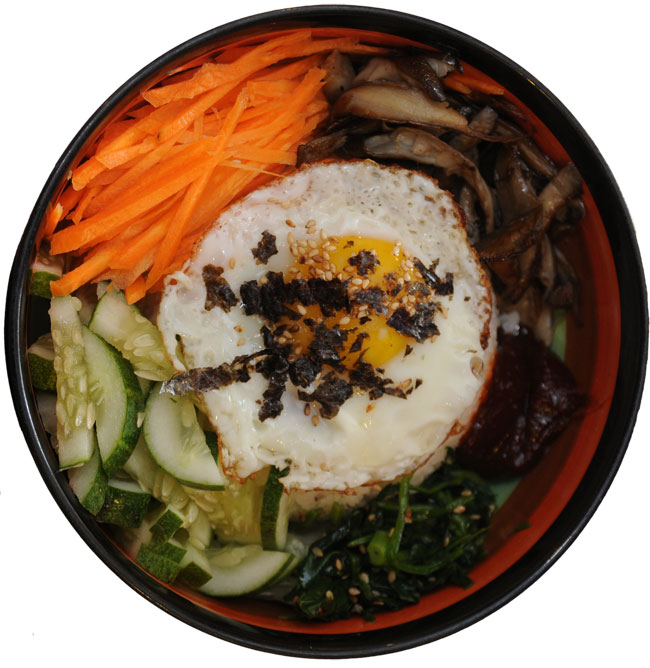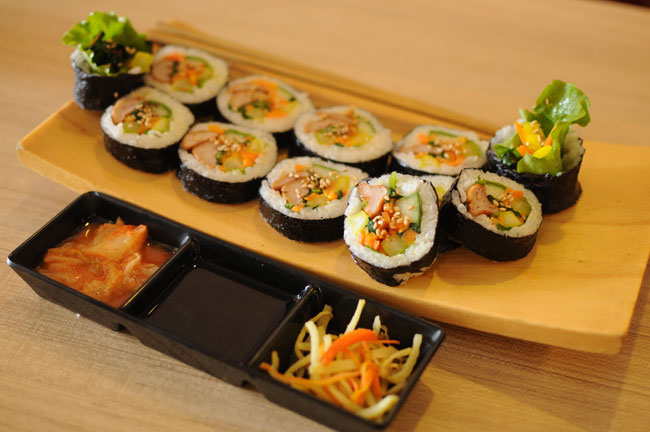Replicate your favorite Korean dishes at home
Sometimes the palate craves a change of taste and, contrary to popular belief, you don’t need to always head out to fancy restaurants to satisfy these gastronomical yearnings. You can treat your taste buds to international cuisine from the comforts of your own kitchen. Many may consider the task of preparing foreign dishes intimidating but you will be surprised. The Week plans to catch up with chefs from various international cuisine restaurants for some easy tips and tricks to replicate your favorite dishes at home.
This time around, we headed to Kori’s at Boudha. Along with its sumptuous burgers, the cozy cafe is also famous for its variety of Korean dishes. Chef Chhacha Sherpa shares that she immensely enjoys preparing Korean food for the customers as it incorporates exotic complementary flavors, bright colors and funky textures. Further, since these cuisines also stay clear of deep fried and fatty foods, in favor of cleaner and more nutritious vegetables and grains, she apparently also loves how healthy Korean foods tend to be.
Now while some aspects of cooking Korean can be a tad complicated (kimchi, for example), Sherpa lets us know that there are many items that are easy as well. Here she shares the recipes of two of the most uncomplicated as well as popular dishes at Kori’s.
Vegetable Bibimbap
A Korean favorite, this dish takes multiple food groups and combines them in one lunch bowl to make sure you’re getting a balanced lunch in a simplified form. The dish combines rice, vegetables, meat, and eggs for a balanced flavor.

Again, one can find many variations of this dish around the globe. People make it the way they like it, with ingredients of their choice. While Bibimbap used to be a dish meant for Korean royalty, it’s now easily accessible and a crowd pleaser. It’s incredibly easy to make and Kori’s highly recommend it for your next lunch break.
Ingredients
A bowl of sticky rice
Clutter free cooking

Vegetables (Half will be served cooked, and half will be raw.)
Bibimbap paste (Available at Korean shops around Thamel.)
Methodology
Sherpa foremost recommends buying good quality rice because that can really enhance the taste of your dish. Further, her tip is to wash it thoroughly. Unlike our regular rice that can be cooked after two washes, sticky rice requires more. At Kori’s, they apparently wash it five times at least.
In this particular recipe, Kori’s used mushroom, carrots, spinach and cucumber. You can easily sauté the mushroom and carrot in some cooking oil. Add some chopped garlic and sprinkle salt. It should be done in three to four minutes.
As for the raw veggies, thinly slice them. From leeks, lettuce to cucumbers, everything works with a Bibimbap.
Traditionally, this dish comes with a fried egg. Many prefer it sunny side up. If you are vegan or strictly vegetarian, you can replace the egg with tofu as well.
Now place the rice in a big bowl and neatly layer it with all the vegetables, ending with the fried egg on top.
Sprinkle it with sesame seed and then add half a tablespoon of sesame oil. This will help bring out that extra flavor. You can also put small pieces of dried seaweed on it.
Lastly, we have the Bibimbap paste. Sherpa simply puts it inside the dish. However, this paste may not go down very well with every Nepali’s palate. It might be a smart thing to do to taste it first and then only use it accordingly.
Kimbap
This is certainly harder to make than your typical sandwich. However, a tad extra effort will give you a great wholesome snack option to take on the go. Like most Korean dishes, Kimbap is freewheeling, meaning the fillings can be basically anything that fits. For instance, Kori’s serves options of tuna, cheese and sausage. However, from lean protein like marinated beef to avocados, raw fish, egg and of course, vegetables, anything goes.

The only constants in this dish are the kim (seaweed), the bap (rice) and a touch of sesame oil, which is usually brushed over the kimbap before it’s sliced.
Ingredients
Rectangular pieces of pre-cooked dried seaweed sheet (Available at Korean shops around Thamel.)
One small bowl of rice
Thinly sliced vegetables of your choice (Note: it’s recommended to limit your number of fillings to about three or four.)
(You will also need a Kimbap rice roller that is basically a small, flexible mat made of bamboo sticks.)
Methodology
First, cook your small bowl of rice and let it cool down. Kimbap rice are often seasoned with salt and sesame oil. So add a dash of each according to your taste and mix it well.
Then as per your filling choice, cook your meat or sauté your vegetables. Some chefs prefer using refined coconut oil to lightly cook the veggies as they compliment Korean flavors. You also have to cut your filling (vegetable or meat) vertically in thin, long slices.
Next, take a sheet of dried seaweed and place it on the rice roller. Make sure the shiny side of the seaweed is on the outside.
Take the rice and thinly spread it up to about two thirds of the seaweed sheet. It’s best to leave a gap at the end. It will make the rolling process easier.
Then take the vertically sliced fillings and neatly place them on top of the rice.
Now, for the tricky bit, you will need to roll up the seaweed sheet with the rice roller. This certainly takes some practice. Firmly hold it with your hand and begin rolling a section at a time. Apply a lot of pressure on both ends as you go about it.
After you get a long roll of Kimbap, simply cut it in circular pieces.





































